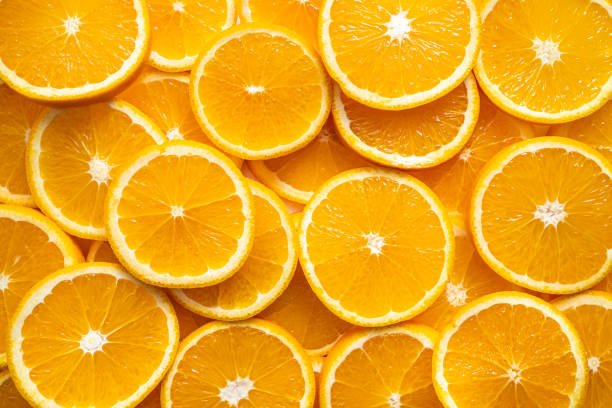
What Fruits Can You Eat to Lower Blood Pressure? 5 Must-Eat Fruits for Patients With High Blood Pressure, Which Can Also Help Fight Cancer
Hypertension can be said to be a silent killer. Because the initial symptoms are not obvious, it is easy to be ignored, which can lead to various diseases such as heart disease, diabetes, and kidney disease. In addition to regular blood pressure measurements, people with high blood pressure should pay special attention to their daily diet, including fruits. Types must be carefully selected to help lower blood pressure.
Many fruits are advertised as being extremely sweet. Which of these fruits are suitable for patients with high blood pressure? Let us introduce them to you one by one below!
What foods are good for lowering blood pressure? 5 super powerful fruits for you to know
In addition to regular medication and regular exercise, patients with high blood pressure can also adopt diet to control blood pressure. They can also consume fruits that can help lower blood pressure to maintain normal blood pressure. According to the recommendations of the National Health Service, each person should consume at least 2 servings of fruit per day. One serving of fruit is about the size of a fist. If it is cut into pieces, one serving is about half a bowl to 1 bowl. In addition to enjoying delicious food, patients with high blood pressure may wish to eat more of the following five fruits that can help lower blood pressure:
1.Banana
Bananas are rich in nutrients such as magnesium, potassium, and carbohydrates. The potassium ions in them can effectively balance excess sodium in the body to reduce the chance of suffering from high blood pressure and cardiovascular diseases. In addition, bananas also contain vasopressin cyclase inhibitory substances, which can lower blood pressure. Therefore, it is recommended that each person consume about 95 grams (1/2 large banana, 1 small banana) per day. Not only can it lower blood pressure, but the water-soluble fiber contained in it can also prevent colorectal cancer from coming to your doorstep.
However, it is worth noting that if you are already a patient with high blood pressure and receiving drug treatment, some of the drugs you take may increase blood potassium and cause physical discomfort. Therefore, it is recommended to discuss with your doctor before deciding on your daily banana intake. quantity.

2. Orange
Oranges are rich in nutrients such as potassium, tin, magnesium, folic acid, beta-carotene, and vitamins A, B, C, and D. Like bananas, oranges also contain the mineral potassium, which can reduce the risk of high blood pressure. As for folic acid, It can reduce the chance of atherosclerosis.
In addition, vitamin C and beta-carotene are powerful antioxidants that can reduce oxidative stress on blood vessel walls, protect blood vessels and reduce cholesterol accumulation. However, it is recommended that people with high stomach acid should try not to eat oranges 1 hour before meals, but may eat them after meals instead.

3. Kiwi
Kiwi fruit is a cooling food. If you have strong anger or often stay up late, you can eat kiwi fruit in moderation. In addition, because kiwi fruit is rich in potassium, it can help patients with hypertension lower blood pressure. According to a study uploaded by the U.S. National Library of Medicine, eating three kiwi fruits a day is more effective in lowering blood pressure than one apple a day.
Kiwi fruit is also rich in vitamin C, which can accelerate the conversion of triglycerides and cholesterol into cholic acid, maintain the elasticity of blood vessel walls, and prevent atherosclerotic changes, arteriosclerosis and hypertension.

4. Strawberry
Strawberries are rich in vitamin C, dietary fiber, anthocyanins, ellagic acid and other nutrients; the vitamin C contained in them is a natural antioxidant that can protect the body from free radical damage and prevent arteriosclerosis and hypertension. ; The dietary fiber in it can reduce the risk of colorectal cancer.
Winter is the domestic strawberry production season. When choosing strawberries, it is recommended to choose strawberries that are plump in shape, bright red in color, shiny, and fragrant. After buying them home, you must also remember to pack them in wooden boxes or cardboard boxes. and place it in the refrigerator to keep it fresh; in addition, be sure to wash it before eating to avoid the risk of pesticide residues.

5. Guava
Guava contains 193.7 mg of vitamin C per 100 grams. Compared with the vitamin C contained in bananas, it is nearly 9 times more. It helps lower cholesterol and prevent coronary artery blockage. Not only that, guava also contains nutrients such as quercetin and polyphenols, which can increase the antioxidant capacity in the body. In addition, guava is also rich in potassium, which can also help patients with hypertension lower blood pressure.
However, due to the high sugar content of guava, it is recommended to eat it with other fruits. Do not eat too much, otherwise it may lead to excessive sugar intake and cause blood sugar to spike.













